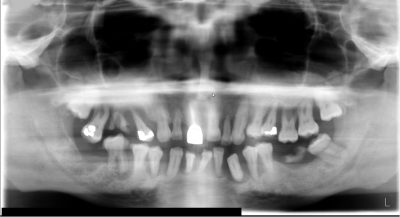Periodontal Treatment & Deep Cleanings
Gingivitis, Periodontitis, and Gum Treatment
Back in 2010, I wrote about the Differences between Gingivitis & Gum Disease, and it’s a good introduction. I’ll cover the basics here though, so you don’t have to go back and forth. 😀
Gingivitis
If you listen to Listerine commercials, it sounds like gingivitis is a horrible disease. No, it’s not! Even the people with awesome dental hygiene usually get a little gingivitis, or gum inflammation. It’s caused by build-up of plaque and calculus, aka tartar, which irritates the gums. They swell up a little and become red & irritated. Regular dental checkups & cleanings ensure that junk is thoroughly cleaned off. Your gums heal very fast. Proper flossing, brushing with a fluoride toothpaste, rinsing with a non-alcohol based mouthrinse, & a water pick are the best ways to avoid gingivitis.
Periodontal Disease/Gum Disease
With poor oral hygiene however, plaque and calculus (hardened plaque) builds up below the gumline. The longer the calculus stays and builds up, the more inflamed your gums get. Because the bacteria causing periodontitis hide in the calculus, your immune system can’t kill them off. It doesn’t stop trying though. Over time, your body’s attempts to kill the bacteria damage your gums and bone. The pockets around your teeth, which should be 2-3mm and not bleeding, get deeper and start bleeding. The higher the numbers, the worse the infection and damage. This condition is known as periodontitis. As gum disease worsens and you lose bone, the teeth eventually loosen. If it’s really bad, teeth may just fall right out of your mouth! The patient in the digital panoramic x-ray below, had such severe gum disease, we had to extract all his teeth. With our beautiful dentures though, he had a great smile really soon.

This patient had extremely bad periodontal disease, and all teeth had to be extracted for dentures.
What is a Deep Cleaning?
The technical term for this procedure is Scaling & Root Planing, but most people don’t remember that. A more understandable term is “deep cleaning.” During a deep cleaning, our hygienists clean off all the calculus and plaque, both above and below the gum. Because your gums are probably tender, we usually recommend some level of numbing. Our hygienists may use a little gel called Oraquixx, or I may need to fully numb you for comfort. Of course, no one likes getting numb, but it’s more comfortable than hurting for sure!
Are There Other Treatments for Periodontal Disease?
While the first treatment is often a deep cleaning, you may need gum surgery (periodontal surgery) for severe periodontitis. LANAP (Laser Periodontal TherapyTM) is a terrific option for patients with moderate or severe gum disease.
If you have receding gums, so the roots of your teeth are exposed, that’s usually not caused by periodontal disease. However, the recession can be treated with different types of gum grafts, to either reverse or prevent further recession.
Give us a Call or Request an Appointment
if you’re worried about losing your teeth to gum disease.
It’s that easy to start.






